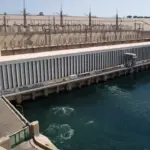What is the difference between Mortar and Parging Cement
Mortar is a construction material made from a mixture of cement, sand, and water. It is used to bond bricks or stones together and can also be used to fill in the gaps between them.
Parging cement is a type of mortar that is used to coat the outside of a building. It is usually applied to masonry walls to give them a smooth finish.
What is mortar
?
Mortar is a construction material typically made of a mixture of sand, water, and cement. It is used to bind together bricks, blocks, and other masonry units. It is also used as a plastering material.
Mortar is composed of fine (sand-sized) particles that are mixed with water and cement. The cement acts as a binder, holding the mortar together. The water is used to hydrate the cement and to provide workability.
The sand provides the bulk and gives the mortar its strength. The ratio of sand to cement is generally between 3:1 and 5:1 by volume.
Mortar can be either mixed by hand or by machine. Machine mixing is generally faster and more consistent, but hand mixing allows for more control over the final product.
Once mixed, mortar must be used within a few hours, as it will begin to set and harden.
Mortar is used to lay bricks, blocks, and other masonry units. It is also used as a plastering material.
Like Us on Facebook!
Mortar must be applied to a surface that is clean, level, and free of loose materials. The surface can be wetted before mortar is applied,
Subscribe Us on YouTube!
What is Parging cement?
Parging is a type of plastering that is commonly used on masonry walls. It is a thin layer of mortar that is applied to the surface of the wall in order to create a smooth, even surface. Parging is usually applied to concrete or brick walls, but can also be used on stone walls. The word “parge” comes from the Latin word for “to plaster.”
Parging is typically used for aesthetic purposes, as it can give a masonry wall a more finished look. It can also be used to cover up imperfections in the wall or to fill in cracks. In some cases, parging can also be used to strengthen a wall by providing a layer of protection against the elements.
Parging is a relatively simple process that does not require a lot of specialized equipment. The most important tool for parging is a trowel, which is used to apply the mortar to the wall. A parge brush can also be used to smooth out the surface of the mortar.
Parging mortar is typically made from Portland cement, sand, and water. The proportion of these ingredients will vary depending on the specific project. In most cases, the mortar
Should I prefere Mortar or Parging cement
Mortar is a construction material used to bind building blocks, such as bricks, together. It is composed of a mixture of cement, sand, and water. Parging is a thin layer of mortar applied to masonry walls to provide a smooth surface.
When choosing between mortar and parging cement, there are a few factors to consider. The most important factor is the purpose of the project. If the goal is to create a smooth, finished surface, then parging cement is the better choice. If the goal is to bind building blocks together, then mortar is the better choice.
Another factor to consider is the climate. Mortar is more likely to crack in cold weather, so it is not the best choice for projects in cold climates. Parging cement is more flexible and less likely to crack in cold weather.
Finally, consider the cost. Parging cement is more expensive than mortar, so it is important to factor this into the decision.
In general, parging cement is the better choice for creating a smooth, finished surface. It is more expensive than mortar, but it is more durable and less likely to crack in cold weather. If the goal is to bind building blocks together,
Drawbacks of Parging cement
Parging is a process in which a thin layer of mortar or concrete is applied to a surface. Parging is often used to cover up imperfections in concrete or masonry walls. While parging can be an effective way to improve the appearance of a wall, there are some drawbacks to using this technique.
One of the biggest drawbacks of parging is that it can be difficult to achieve a smooth, even finish. If the parging material is not applied evenly, it can create a bumpy or uneven surface. Parging can also be difficult to match to the existing color of the wall. If the parging material is a different color than the wall, it can be difficult to achieve a seamless look.
Another drawback of parging is that it can be time-consuming and labor-intensive to apply. Parging is typically applied in small sections, which means that it can take a long time to cover an entire wall. In addition, parging must be applied carefully in order to avoid creating air pockets or bubbles.
Finally, parging can be susceptible to cracking and chipping. If the parging material is not applied correctly, it can crack or chip over time
















